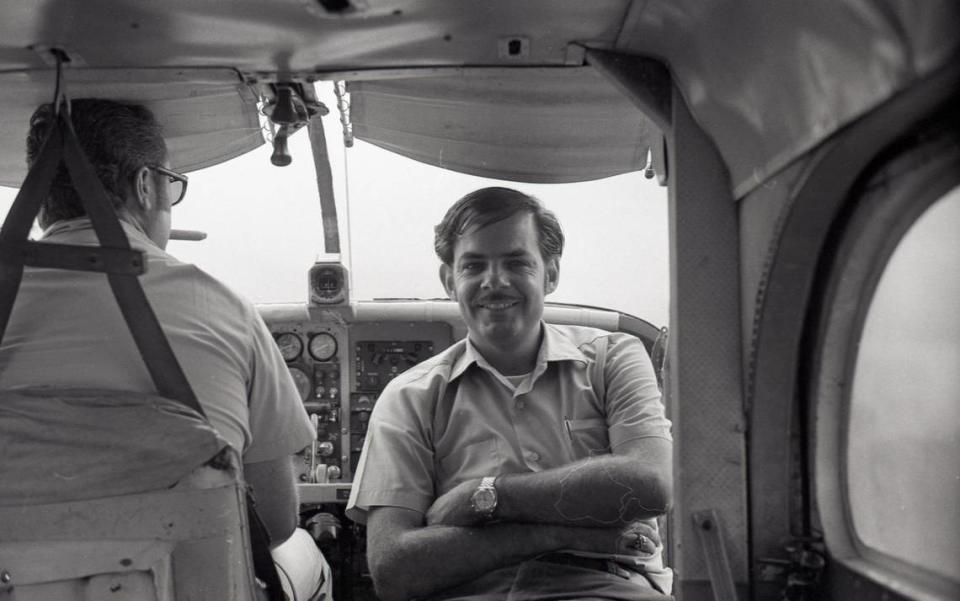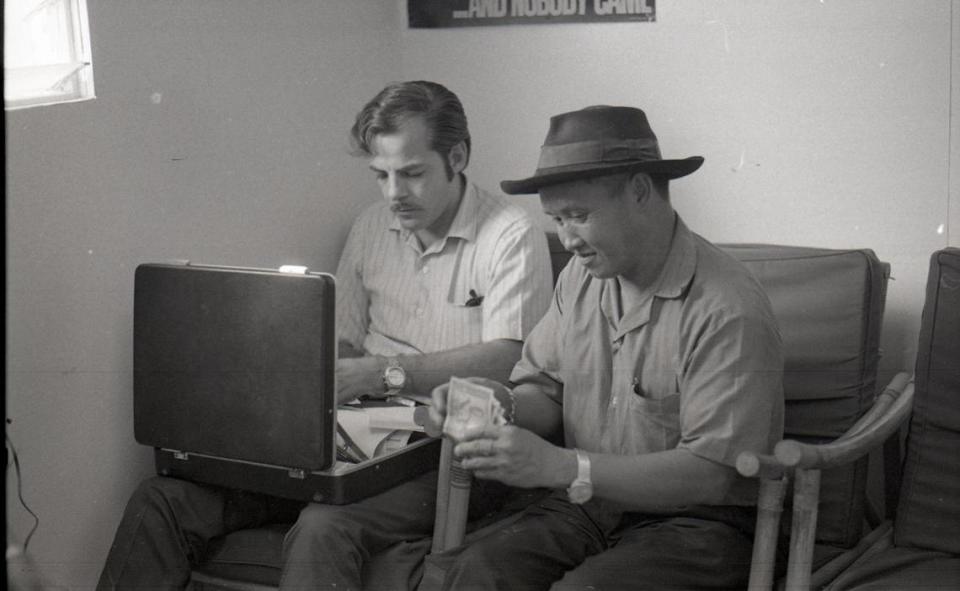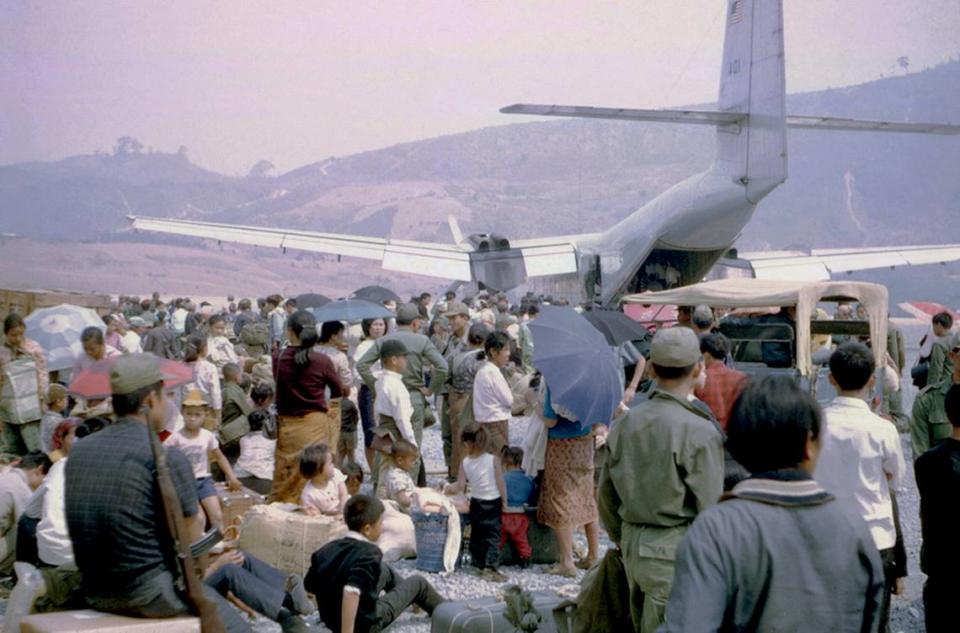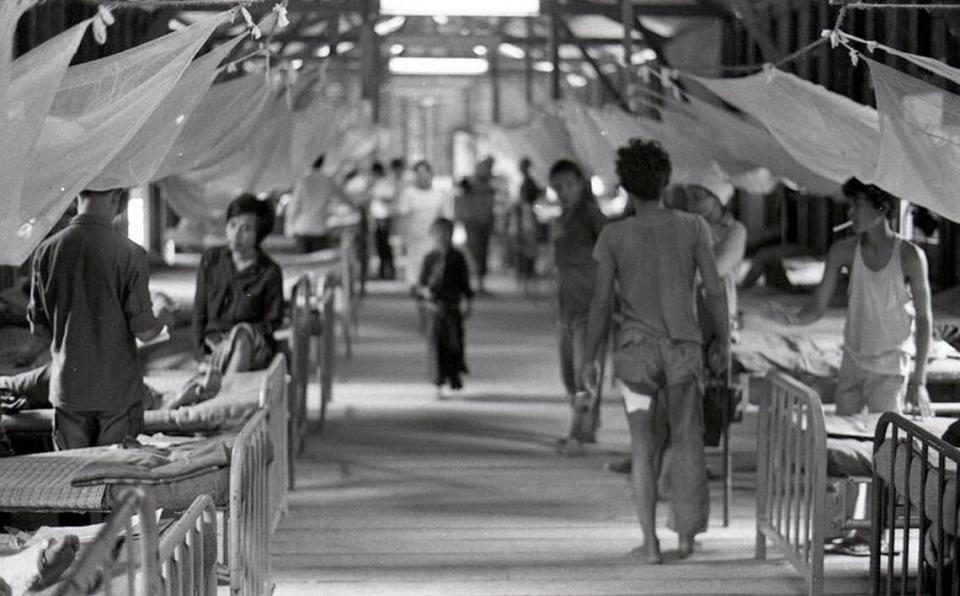Hmong culture in 1960s war-torn Laos documented by California man. Fresno State has archive
Though Galen Beery wasn’t Hmong himself, he had the unique opportunity to photograph Hmong people and their culture by capturing life experiences in war-torn 1960s Laos.
Photos taken by him and Lee Seng, his assistant, offer glimpses into what life was like at the airfield and USAID station where Beery worked. The only posed images appear to be the ones of groups, class-photo style, of Americans and Southeast Asians. The two documented everything from the mundane, a group of Hmong women chatting through a window, to the heartbreaking, a mother mourning the loss of her husband and child.
Beery, a Southern California native, spent over a decade working in Southeast Asia, taking photographs to document history, as the region was at war: secret bombing missions happened across Laos and Cambodia while the United States fought in Vietnam.
After Beery returned stateside, he helped hundreds of Hmong and Laotian people find refuge in America in the aftermath of the war.
Now, Fresno State is exclusively displaying more than 400 of his photos. The Galen Beery Legacy collection and exhibit launched in November with hundreds of digital images donated by the Hmongstory Legacy Project. The collection is the first piece of a planned, in-depth history and culture archival repository that will include more than 30,000 documents and artifacts contributing to the preservation of Hmong history.

The Hmongstory Legacy Project is an organization dedicated to the preservation and sharing of Hmong history and culture based in Fresno. California is a top state for Hmong residents, and Fresno has the second largest Hmong population of any U.S. city, according to a 2019 survey by the Pew Research Center.
Lar Yang, one of the Hmongstory Legacy Project co-founders, knew Beery and is proud of the partnership forged between Fresno State’s Library and his organization, not only for the Hmong community’s benefit but also for everyone who sees these photographs, he said.
“To me, as a refugee kid,” Yang said, “my understanding of what it means to be an American hero is people like Galen Beery, who go out into the world to change it.”
Hmong people are an ethnic group with their own language and culture who originated from China and have over 4,000 years of history. However, much of that history isn’t recorded or is lost because the Hmong had to constantly migrate to Vietnam, Laos, Thailand and Burma because of decades of persecution by the Chinese government as the Hmong wanted to retain their cultural and spiritual practices.
In the early 1960s, the CIA recruited Hmong people to help fight against North Vietnam and the communist party in Laos, known as the Pathet Lao. The operation, also known as the Secret War, lasted from 1962 to 1975. It resulted in the Pathet Lao taking over Laos’s governance and thousands of Hmong and Laotian people seeking refuge in the United States in 1975.

Though he was a conscientious objector and did not enlist in the armed forces, Beery still found himself close to the front lines in Southeast Asia.
After graduating with a history degree from the University of La Verne in 1959, Beery headed to Laos and Cambodia with the International Voluntary Service (IVS) and the United States Agency for International Development (USAID). While working to help communities around him, he documented what he saw during the war as Hmong and Laotian communities suffered the armed conflict’s effects.
Soon after he returned to the United States, Beery worked as a translator, held directorial roles in resettlement programs and worked with the International Rescue Committee (IRC) in San Diego. Internationally, he also worked as chief of the American Council for Voluntary Agencies in Kuala Lumpur, Malaysia, continuing to help refugees resettle.
Yang met Beery in 2014, when Hmongstory was working on its 40-year commemoration exhibit, marking a surge of Hmong migration from Southeast Asia to the United States in 1975.
In the two years before Beery died unexpectedly in a fatal car accident, he donated thousands of original pieces – negatives, prints, objects, documents – to the Hmongstory Legacy Project.

Together, Hmongstory and Beery also recorded a video interview, where Beery explains how he became so involved with the Hmong community, which is publicly accessible within Fresno State Library’s exhibit.
“He had been preserving all this history for the future generations,” Yang said.
Wanting to share Hmong history and Beery’s photos, Yang said Hmongstory approached Fresno State because having the documents included in an American database makes it easier for them to be searchable and viewed by more people.
Renaldo Gjoshe, head of digital services at Fresno State’s Library, encouraged everyone to access the collection and exhibit, and reflect on Beery’s work.
“If history isn’t documented,” Gjoshe said, “then it’s forgotten.”

The Hmong History Digital Archive and Repository is funded by Fresno State’s president’s office, said Tammy Lau, Fresno State Library’s Special Collections Research Center head librarian.
Lau said the special collections team will also be seeking grant funding to expand and enhance this project.
“There is a need to identify more historical Hmong community materials within the Central Valley,” she said. “There is also a need for volunteers, especially those who know the Hmong language.”
To continue growing the Hmonh history repository, Lau said there are plans for many more digital galleries to be created and talk of recording oral histories with people in the community.
Those interested in helping and/or contributing can reach out to Fresno State Library’s Special Collections Research Center by calling 559-278-2595 or emailing scrc@mail.fresnostate.edu.
Also, those wanting to volunteer at Hmongstory Legacy Project can sign up online on their website. For community members who want to contribute to documenting Hmong history, they can email Lar Yang at laryang@yangdesign.net.
The Galen Beery Legacy exhibit is available for everyone to browse online through Fresno State Library’s website at https://bit.ly/410Unpg.

